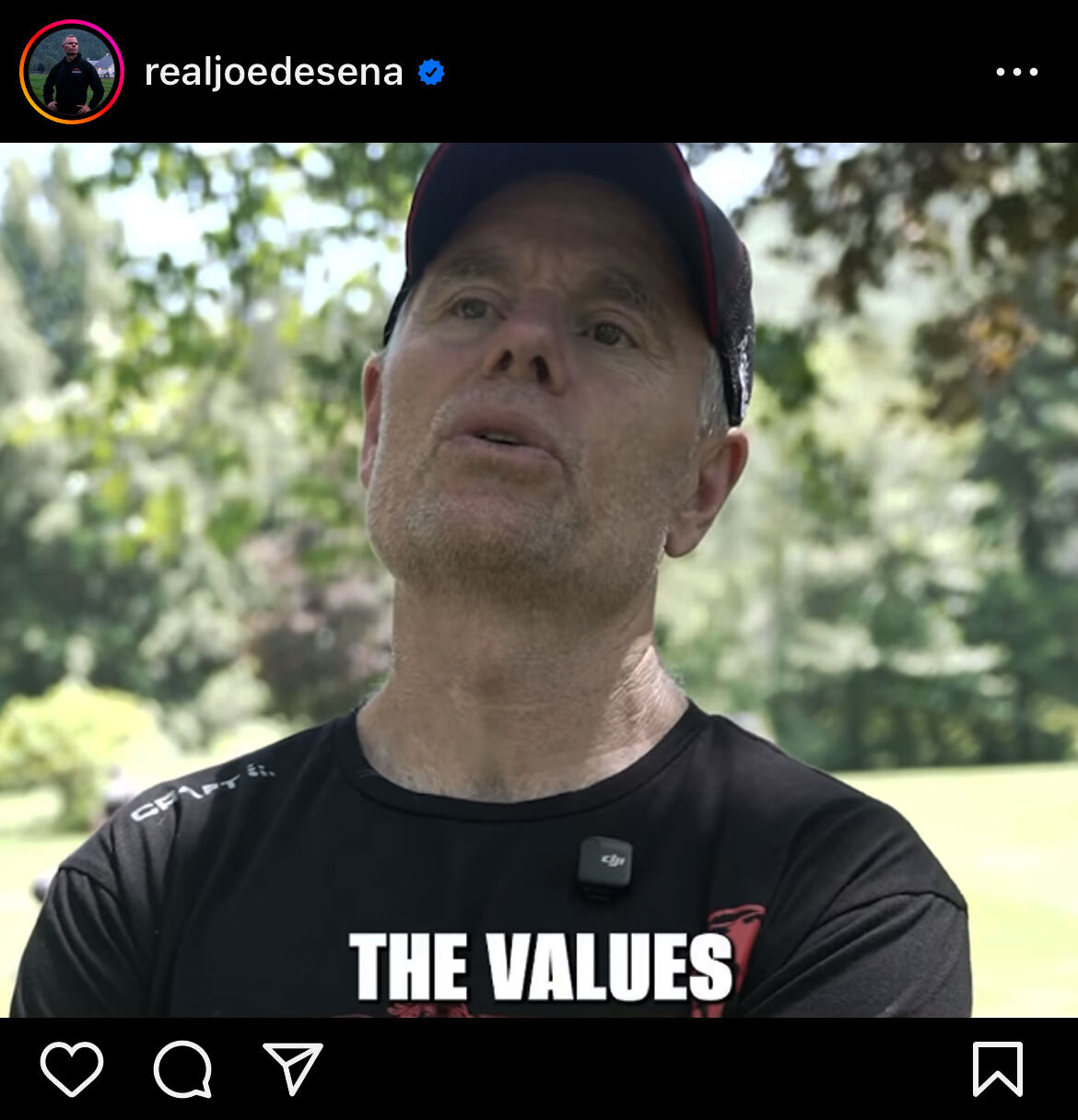 | | In today's edition, Joe shares: - Why grip strength is more than muscle
- What Tommy Caldwell taught him about holding on
- The rope climb test that leveled up his own son
| | Spartans!
Hi, it's Joe here, writing this week from Florida in the great United States of America, where I'm wishing a happy Fourth of July to every Spartan out there, whether American or friends of our country, who know real independence is earned, not given.
The Truth About Strength Lately, I've been thinking about grip strength, which is the simplest test that never lies. When I was a kid growing up in Queens, we didn't have fancy gyms or workouts under shiny lights. My training was climbing fences when I needed to get out of trouble, hauling pool gear for my neighbor's business, and pulling myself up scaffolding at the construction sites where my dad worked. I didn't think of it as training back then. I just knew that sometimes you had to hold on. And if you couldn't, you'd get left behind.
Even now, rope climbs are still an obstacle for me. They're not complicated, but they expose every weakness—in your grip, your back, and your mind. That's exactly why I still do them. You don't build real strength by showing off where you're strong, but by holding on in the areas where you might fail.
There's science behind that too. Doctors measure grip strength because it reveals more than most people realize: your endurance, your resilience, and your ability to handle stress. You can look fit, but if your grip is weak, you're not as strong as you think you are.
Lessons in Holding On I just spoke with Tommy Caldwell, one of the best climbers alive. He's the guy who free climbed the Dawn Wall on El Capitan. Nineteen days living on a vertical face, gripping edges barely wider than a credit card. And he did it after losing part of a finger in an accident that would have ended most careers. He told me, if you can train your mind to hold on no matter what, you'll find out you're stronger than you think.
Years ago, when my son Charlie was still in middle school, he told me he wanted an Xbox. I said, "Sure. But you're gonna earn it." I pointed to the rope climb machine in the garage and told him if he could do 29,035 feet—the height of Everest—he'd get it. Charlie sat out there for hours non-stop. His hands started bleeding. He didn't stop until he hit that number. He didn't know it at the time, but he leveled up before he ever turned that Xbox on.
Whether it's fences in Queens, a rope in your garage, or your own life trying to shake you off, the same rule applies: when everything wants you to let go, you hold on. That's how you level up.
Ready to Test Yourself? If you want to test that, grab a rope and see how long you last. Just you and your grip. And if you can't hang a rope from your ceiling, we partnered up on a piece of gear that does the job. It's called the Ropeflex Spartan Grip. It's simple and brutal. We tested it on a few Spartans— take a look.
Good luck to everyone racing in Morzine, France this weekend. It's one of the most beautiful and punishing places on the planet for a rope climb. And if you can't be there, watch the Ultra World Championship live this Friday at 12:00 CET on YouTube at @spartanracetube.
Hurry up,
Joe | | | HOLDING ON | The rope climb has always been my weakest obstacle. I hated fences, pull-ups, anything that made my arms burn and my grip fail. To this day, I keep it in my workouts. Not because I'm good at it, but because I'm not. Real strength isn't built where you're strong. It's built when you refuse to let go where you'd rather quit.
More stories: The Spartan Way by Joe De Sena. | | | You Ask, Joe Answers | Q: "Joe, what's the hardest part of training for you now?"
- Liam P.
A: Staying uncomfortable. It's easy to slip into routines that feel good but don't push you. The hardest part is looking for hard - reminding yourself that comfort never made anyone strong.
Aroo!
Question for Joe? Want to tell him what you think of The Hard Way? Email him at thehardway@spartan.com. | | | | The best way to teach grit to your kids isn't through lectures. |  | | CLICK TO SHARE | | | They Said It | | "Nana korobi ya oki (七転び八起き) — fall seven times, get up eight." | | – Japanese Zen Proverb | | | ➝The Hard Way Podcast with Joe | | | What Surfing Death Waves Taught Him About Life | | | Joe De Sena sits down with Laird Hamilton, a legendary big wave surfer, who's built his entire life around mastering fear. From riding 80-foot waves to building a purpose-driven brand, he shares how the ocean broke his ego, and taught him what really matters. | | | | | | ➝Watch The Latest Hard Way Video | | | Broken, Not Beaten | | After 48 brutal hours of darkness, pain, and pushing past his limits, Coach Trevor Franklin was pulled from the Death Race, missing the final cutoff. | | | | | | To keep receiving this newsletter, sign up here. | | | WHAT DO YOU THINK OF THIS NEWSLETTER? | | | | | |
No comments:
Post a Comment